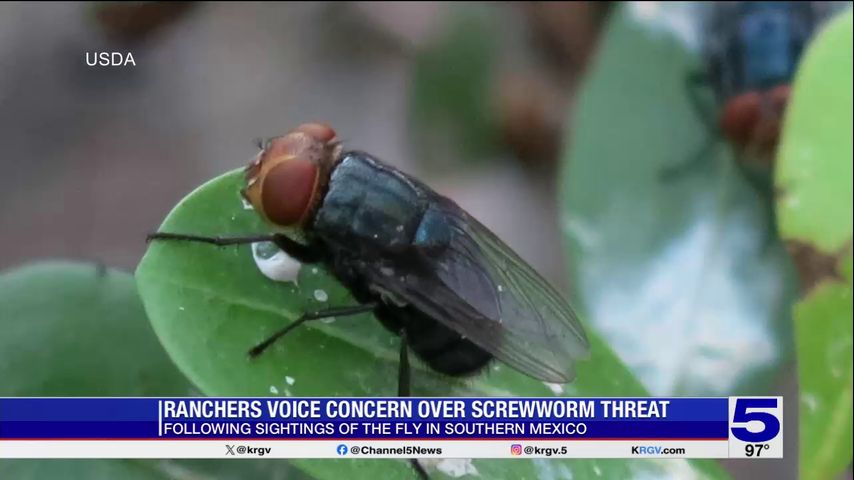Valley ranchers concerned over screwworm threat following outbreak in southern Mexico
A rancher is warning others about the potential spread of the screwworm.
It's a fly that right is currently in southern Mexico, but it's been moving north.
"You might have pets, you might have a horse, they are companion animals. This pest isn't a discriminator. It will infect any animal with an open wound," East Foundation Chief Science Officer Dr. Jason Sawyer said.
New legislation proposed Friday by Representative Monica De La Cruz calls on the USDA to study the problem and prepare a response.
At El Sauz Ranch in Willacy County, a lot of work has been underway to get the herd ready. They're concerned that as the screwworm continues moving through Mexico, it could affect them here in South Texas.
El Sauz is a 27,000 acre ranch that mixes commercial cattle raising with wildlife conservation. The cows are currently freshly dewormed and ready to head back out.
"Yeah, I take a lot of pride in going to take care of our herds," El Sauz Ranch Unit Manager Dylan Durbin said.
Durbin tracks and feeds the cattle several times a week. His concerns are now growing about the spread of the screwworm in Mexico.
"Hoping they still don't show up. The biggest concern for us would be our calf crop. The calves are more vulnerable to these flies and dying because of them," Durbin said.
In 2023, the screwworm broke through its containment zone in Panama. The population spread more than a thousand miles in two years.
The screwworm is a type of fly that burrows into open wounds, big or small, on all warm-blooded animals.
"Their eggs hatch into worms that feed only on living tissue. So they actually eat live animals. They cause significant damage to the animal and can result in death if left untreated for more than just a couple of days," Sawyer said.
Sawyer says the screwworm is multiplying in warm weather. They worry it would attack their herds and cause $1.3 billion a year in economic losses for ranchers.
"With the prevailing south winds, these are flies, they get blown by the wind, and so the conditions are really ripe for their expansion and movement," Sawyer said.
Sawyer says the population is expected to travel five to 10 miles per day.
"We're coming up with plans now to be ready if it does show up," Sawyer said.
Ranches like the East Foundation are calling on the USDA to establish a lab to grow sterile screwworms that can't breed and would stunt the growth of the fly population and drive it back.
They're asking for that lab to be based in South Texas.
Watch the video above for the full story.





